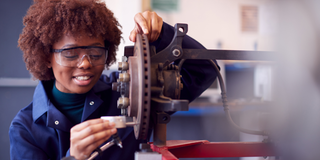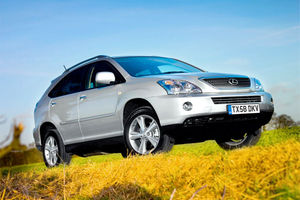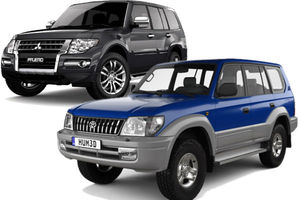
Like any other field, the motoring world has its special terms that are best understood by motorists, mechanics and car enthusiasts. Motoring jargon can be components of a vehicle or actions that take place during repairing or driving.
Junior Munga, a mechanic, says understanding the words or phrases used in motoring will help a motorist feel confident talking to a mechanic, when booking a car for its annual service, searching for a new or used car, or simply wanting to renew their car insurance. Munga explains some of the commonest terms used in motoring.
Chassis
Like a bed, the chassis is the lower framework on which the load of the vehicle is centred. Several car parts are mounted on the chassis and these include wheels, suspension components, engine, transmissions and axle assemblies. In other words, the chassis is the carrier of a vehicle.
Brake fluid
This is a hydraulic fluid in the braking system that helps the transmitted pressure applied to a brake pedal to safely slow down your car. In most cases, when brake fluid is low, signs such as soft pedal, absorbing moisture from the air, corrosion in brake lines, whining noise from the brake pads, and illumination of the anti-braking system warning light on the dashboard will show.
Munga, therefore, emphasises that while brake fluid should be replaced often, sometimes typically every 30,000 miles, it is important to use the specific brake fluid recommended for your car.
Dipstick
This is a long small metal stick/rod with a plastic ring handle with marks at one end. It is used by a car owner to tell the condition (dirty, dark or clear) and level of oil in their car. The dipstick can also tell you about the condition of the oil and can give you an idea of the internal health of the engine.
Cruise control
According to www.kia.com, cruise control is a feature that comes in handy when you drive at a constant speed. It is an electric system that allows you to set your car to a specific speed, letting you take your foot off the accelerator pedal. So, it can ease foot fatigue and stress over a long drive. Another great benefit to using cruise control is that you are going to have greater fuel efficiency. Your vehicle will consume much less fuel if you cruise at a steady speed rather than accelerating at each section of the open road.
Typically, the cruise control buttons can be found on the right-hand side of the steering wheel. Depending on the car, the location of the controls can vary, but the functionality of the cruise control will usually be similar.
Torque and horsepower
Horsepower (hp) is a measurement used to calculate how quickly the force is produced from a vehicle’s engine. It is a key component used to establish the vehicle’s total number of miles during its lifetime. It is also used to inform the driver of the vehicle’s maximum running capacity.
Simply put, torque is a measurement of your car’s ability to do work. So, the more torque, the greater the amount of power an engine can produce. If your engine has a lot of torque, your car can accelerate more quickly when the vehicle starts.
Radiator
The car radiator is the key component of the engine’s cooling system. Its main role is to disperse a mix of anti-freeze and water throughout its fins, which releases some of the engine’s heat while taking in cool air before continuing to pass the rest of the engine. It is located behind the front grill of the car and consists of the core, pressure cap as well inlet and outlet tanks.
Hybrid
Cars that are labelled hybrid are often run on a combination of petrol/diesel engines and electricity. Hybrid technology uses both a gas engine and an electric motor. You get the long-distance peace of mind that gas power delivers. For shorter everyday trips, you will see many benefits of electrification, including potential fuel economy savings over comparable gas-powered models
Suspension
The suspension is a combination of components such as tyres, shock absorbers, springs and others that connect to the vehicle’s wheels.
Munga remarks, “A car suspension is key in ensuring that the vehicle is stable on the road by absorbing all external forces exerted on the wheels such as potholes, speed breakers and other obstacles.”
Shock absorbers
In their simplest form, shock absorbers are hydraulic (oil) pump-like devices that help to control the impact and rebound movement of your vehicle’s springs and suspension. Along with smoothening out bumps and vibrations, the key role of the shock absorber is to ensure that the vehicle’s tyres remain in contact with the road surface at all times, which ensures the safest control and braking response from your car.
Alternator
Sometimes, a car may have a dead battery, trouble starting, dim lights and stalling. This is because the alternator, or generator that charges your car battery and powers the vehicle’s electrical system while running has failed.
Aquaplaning
This usually takes place during the rainy season. It is the separation between the surface of the tyre and the road created by a layer of water. In such circumstances, cars tend to slide uncontrollably on wet road surfaces, especially on highways and express roads since there is no contact between vehicle tyres and the road.
SUV
A sports utility vehicle (SUV), typically features higher ground clearance, rugged construction, spacious interiors and often has a boxy design. As many SUVs are equipped with AWD/ 4WD systems, this makes them able to handle a wide range of driving conditions such as terrains, gravel, city streets and muddy areas.
Traction or traction control
While traction is crucial for determining the vehicle’s ability to accelerate, brake and navigate corners safely, it is primarily about how well the tyres can adhere to the road surface. This, therefore, means the grip of the vehicle’s tyres on the road surface is influenced by factors such as the condition of the tyres, the presence of substances (such as oil) and the road surface which could be wet, dry or rugged.
AWD and 4WD
Sometimes, car buyers cannot differentiate between All-wheel drive (AWD) and Four-wheel drive (4WD) even though both drivetrain types give a better grip and traction than two-wheel drive.
First off, 4WD is a drivetrain that is typically designed for off-road and rough terrain driving and is majorly found in trucks and SUVs. It operates in two-wheel drive mode until 4WD is activated.
However, the AWD drivetrain that is designed for on-road driving with occasional off-road capacity is commonly found in crossovers and some SUVs. It is always active and there is distribution of power automatically to all four wheels as required without the driver’s intervention.
Transmission
In a car, a transmission, or a gearbox, acts as the medium that transmits power generated by the engine to the wheels via a mechanical system of gears and gear trains. A transmission allows a person to apply power to a vehicle in a controlled manner, without which, the car would not efficiently move. Lower gears in a gearbox provide the required torque to accelerate while higher gears help attain high speed by using the engine’s power more effectively.



